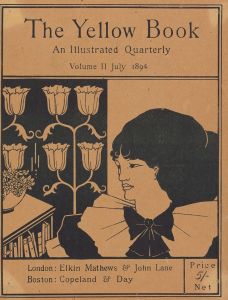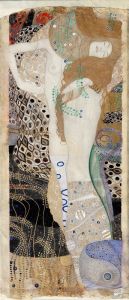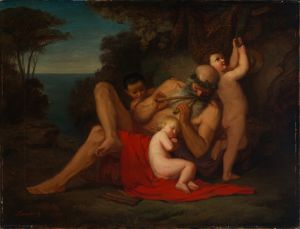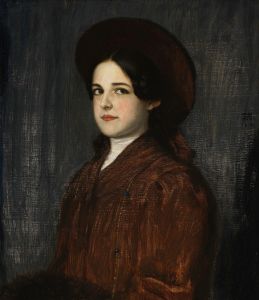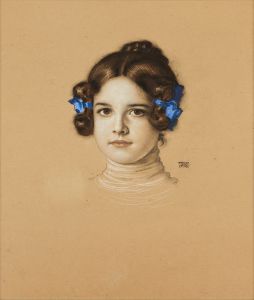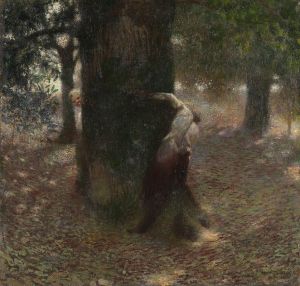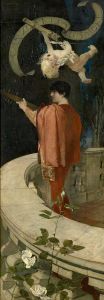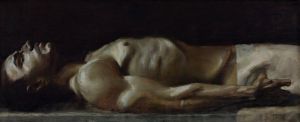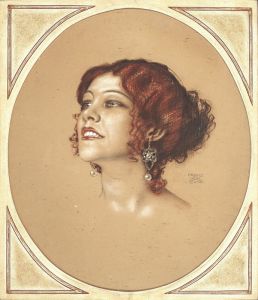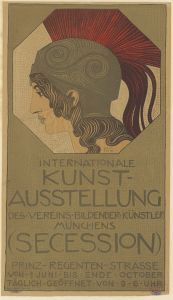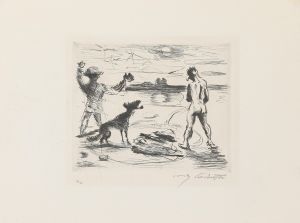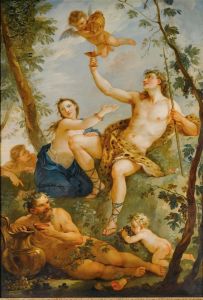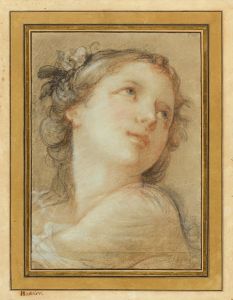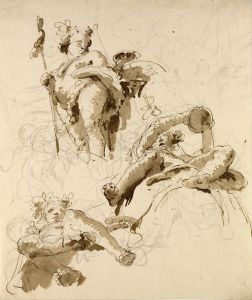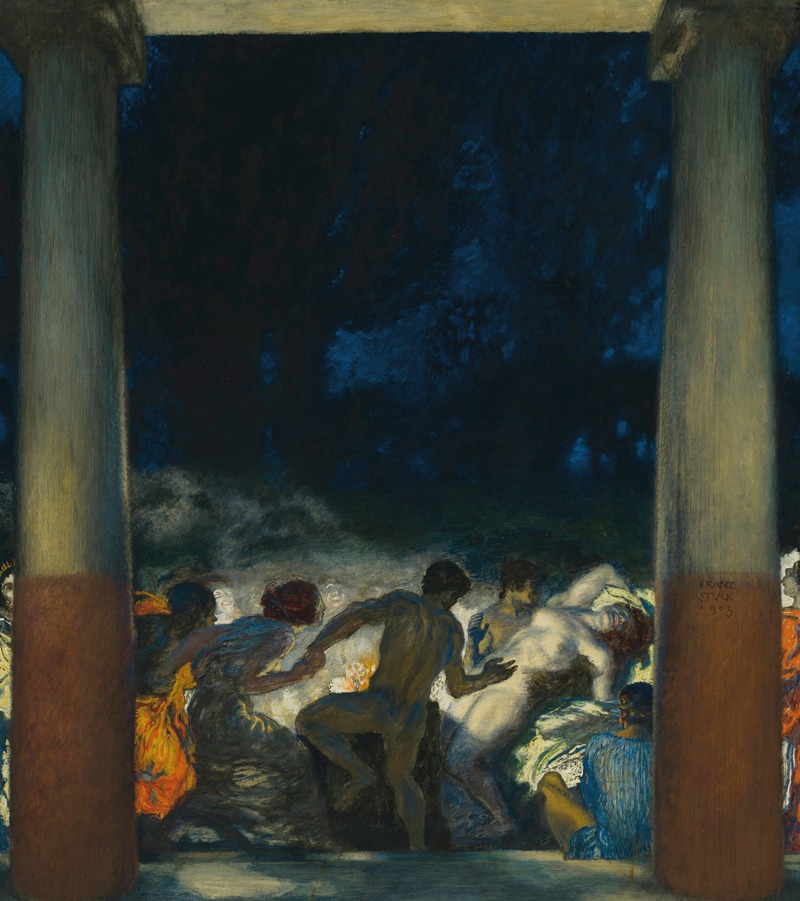
Bacchanal
A hand-painted replica of Franz von Stuck’s masterpiece Bacchanal, meticulously crafted by professional artists to capture the true essence of the original. Each piece is created with museum-quality canvas and rare mineral pigments, carefully painted by experienced artists with delicate brushstrokes and rich, layered colors to perfectly recreate the texture of the original artwork. Unlike machine-printed reproductions, this hand-painted version brings the painting to life, infused with the artist’s emotions and skill in every stroke. Whether for personal collection or home decoration, it instantly elevates the artistic atmosphere of any space.
Franz von Stuck's "Bacchanal" is a notable work by the German Symbolist painter, known for his evocative and often mythologically themed paintings. Created in 1896, "Bacchanal" exemplifies Stuck's fascination with classical mythology and his ability to infuse these ancient themes with a modern, psychological depth.
Franz von Stuck was a prominent figure in the Munich Secession, an art movement that sought to break away from the conservative constraints of academic art in Germany. His work often explored themes of sensuality, mysticism, and the darker aspects of human nature, all of which are evident in "Bacchanal."
The painting depicts a scene of revelry and indulgence, drawing inspiration from the Roman Bacchanalia, festivals dedicated to Bacchus, the god of wine, freedom, intoxication, and ecstasy. These festivals were known for their ecstatic and sometimes chaotic celebrations, which Stuck captures through his dynamic composition and the vivid expressions of the figures involved.
In "Bacchanal," Stuck employs a rich palette and dramatic lighting to create a sense of movement and energy. The figures in the painting are engaged in various activities associated with the Bacchanalia, such as dancing, drinking, and playing musical instruments. The composition is both lively and chaotic, reflecting the uninhibited nature of the festivities.
Stuck's use of light and shadow adds a dramatic intensity to the scene, highlighting the muscular forms of the figures and the textures of their surroundings. The artist's attention to detail is evident in the intricate depiction of the figures' anatomy and the lush, almost tangible quality of the drapery and foliage.
The painting also reflects Stuck's interest in the psychological aspects of mythological themes. The expressions and postures of the figures suggest a range of emotions, from ecstasy and abandon to introspection and contemplation. This complexity adds a layer of depth to the work, inviting viewers to consider the dual nature of indulgence and the fine line between pleasure and excess.
"Bacchanal" is a testament to Stuck's skill as a painter and his ability to reinterpret classical themes for a modern audience. The painting is housed in the Städtische Galerie im Lenbachhaus in Munich, where it continues to be appreciated for its artistic merit and its insight into the cultural and psychological undercurrents of its time.
Franz von Stuck's work, including "Bacchanal," played a significant role in shaping the Symbolist movement in Germany and influenced subsequent generations of artists. His ability to blend mythological subject matter with a modern sensibility has ensured his place in the canon of art history, and "Bacchanal" remains a compelling example of his artistic vision.





